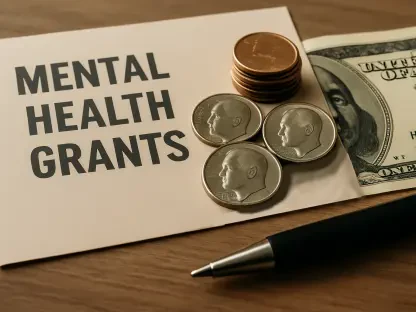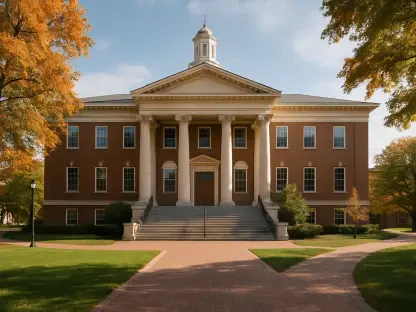I’m thrilled to sit down with Camille Faivre, a renowned expert in education management who has been at the forefront of guiding institutions through complex policy landscapes. With her deep expertise in federal funding mechanisms and university compliance, Camille offers invaluable insights into the evolving relationship between higher education and governmental regulations. Today, we’re diving into the recent $60 million agreement between Cornell University and the Trump administration, exploring its financial implications, the conditions attached, and what it means for diversity, equity, and inclusion (DEI) initiatives on campus.
Can you break down the core elements of Cornell’s $60 million deal with the Trump administration?
Absolutely. This agreement is a significant financial and policy arrangement where Cornell has agreed to pay $60 million over three years to reinstate over $250 million in federal funding that had been cut. Half of the payment, $30 million, goes directly to the federal government, while the other $30 million is earmarked for agriculture research programs aimed at benefiting U.S. farmers through cost reduction and efficiency improvements. It’s a deal that not only addresses immediate funding needs but also ties into Cornell’s identity as a land-grant university with a historic commitment to agricultural advancement.
What drove Cornell to negotiate this agreement in the first place?
The primary driver was the severe impact of federal funding cuts on Cornell’s operations. These cuts led to stop-work orders, grant terminations, and funding freezes that disrupted critical research projects and academic programs. The university faced stalled innovation, upended careers, and uncertainty about the future of key initiatives. For an institution like Cornell, which relies heavily on federal support for research, the situation was untenable, pushing them to strike a deal to restore stability and protect their mission.
Beyond the financial aspects, what other conditions did Cornell agree to as part of this deal?
There are several stringent non-financial conditions in this agreement. Cornell must submit detailed undergraduate admissions data to the federal government quarterly through 2028, including breakdowns by race, GPA, standardized test scores, and major. Additionally, they’ve agreed to use the Department of Justice’s anti-DEI guidance as a training resource for employees. This means incorporating federal perspectives on diversity practices into their internal training, which could influence campus culture and policies. It’s a significant commitment to transparency and alignment with federal priorities.
How has Cornell’s leadership, particularly President Michael Kotlikoff, responded to this agreement?
President Kotlikoff has framed the deal as a necessary step to reverse the damaging effects of funding cuts, emphasizing how these disruptions threatened research and academic stability. He’s been clear that Cornell isn’t admitting any wrongdoing through this agreement, which is an important stance for maintaining institutional integrity. He also insists that the deal doesn’t compromise Cornell’s academic freedom, presenting it as a pragmatic solution that aligns with principles the university already upholds, while resuming a productive partnership with the federal government.
There’s a notable emphasis on diversity, equity, and inclusion policies in this agreement. Can you elaborate on how this plays out?
Certainly. The Department of Justice’s guidance, which Cornell must now use as a training resource, takes a hard stance against certain DEI practices, labeling things like race-based scholarships or resources for specific racial or ethnic groups as illegal. It also warns against using seemingly neutral criteria, like cultural competence in hiring, as proxies for race or ethnicity. For Cornell, this could mean reevaluating existing programs or policies to align with this guidance. Given that similar guidance from the Education Department was struck down in court as unconstitutional, Cornell might face legal uncertainties and will likely need a cautious, strategic approach to balance compliance with its commitment to diversity.
Cornell is also required to conduct campus climate surveys under this deal. What’s the significance of this component?
These surveys are intended to gauge the campus environment, with a specific focus on the experiences of students of Jewish ancestry, alongside broader questions about whether students feel welcome and safe to report issues like antisemitism. The goal is to gather actionable data to improve the campus climate, addressing any underlying tensions or concerns. It’s a proactive step to ensure inclusivity, but it also reflects the administration’s priorities in monitoring specific community experiences, which could shape how Cornell addresses cultural and social dynamics moving forward.
How does Cornell’s agreement compare to similar deals other universities have made with the Trump administration?
Cornell’s deal isn’t unique in its structure or demands. For instance, the University of Virginia also agreed to adopt the DOJ’s anti-DEI guidance and submit regular compliance reports. Similarly, Brown University made a financial contribution to an unrelated cause—workforce development in Rhode Island—as part of its settlement. What ties these agreements together is a pattern of universities conceding to strict federal conditions, including financial payments and policy alignments, to restore funding. Cornell’s case stands out with its dual focus on agriculture research and detailed admissions reporting, but the overarching theme of federal oversight is consistent across these deals.
Looking ahead, what’s your forecast for the impact of such agreements on the broader landscape of higher education funding and policy?
I think we’re entering a period of heightened tension between universities and federal oversight. These agreements signal a shift where federal funding could increasingly come with strings attached, especially around hot-button issues like DEI. Universities might need to brace for tougher negotiations, balancing their missions with compliance demands. We could see a ripple effect where institutions preemptively adjust policies to avoid funding cuts, potentially stifling innovation in diversity efforts. On the flip side, legal challenges to federal guidance, as seen with the Education Department’s overturned document, might embolden universities to push back. It’s going to be a delicate dance, and I expect the next few years will redefine how higher education navigates its relationship with government priorities.









